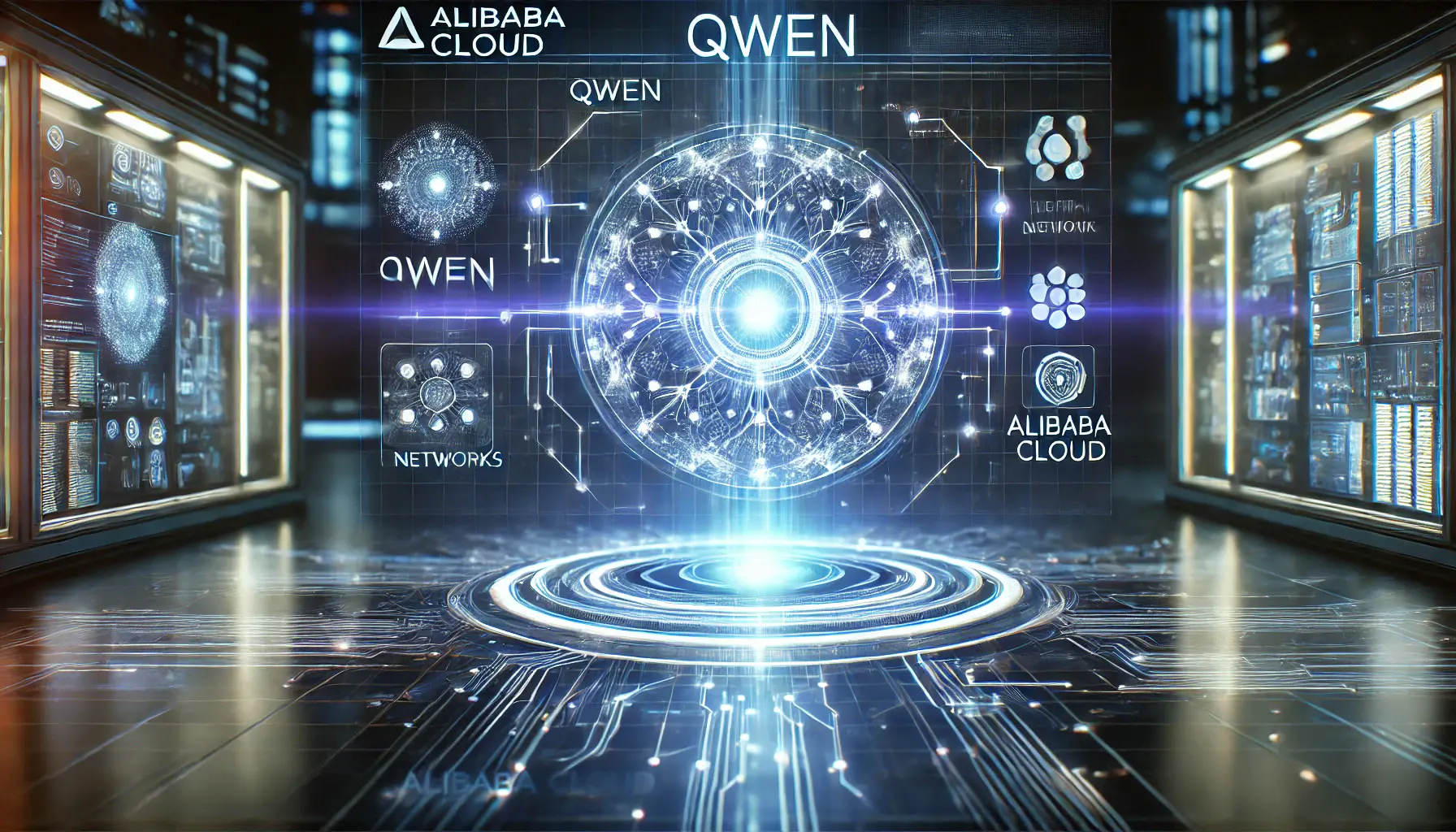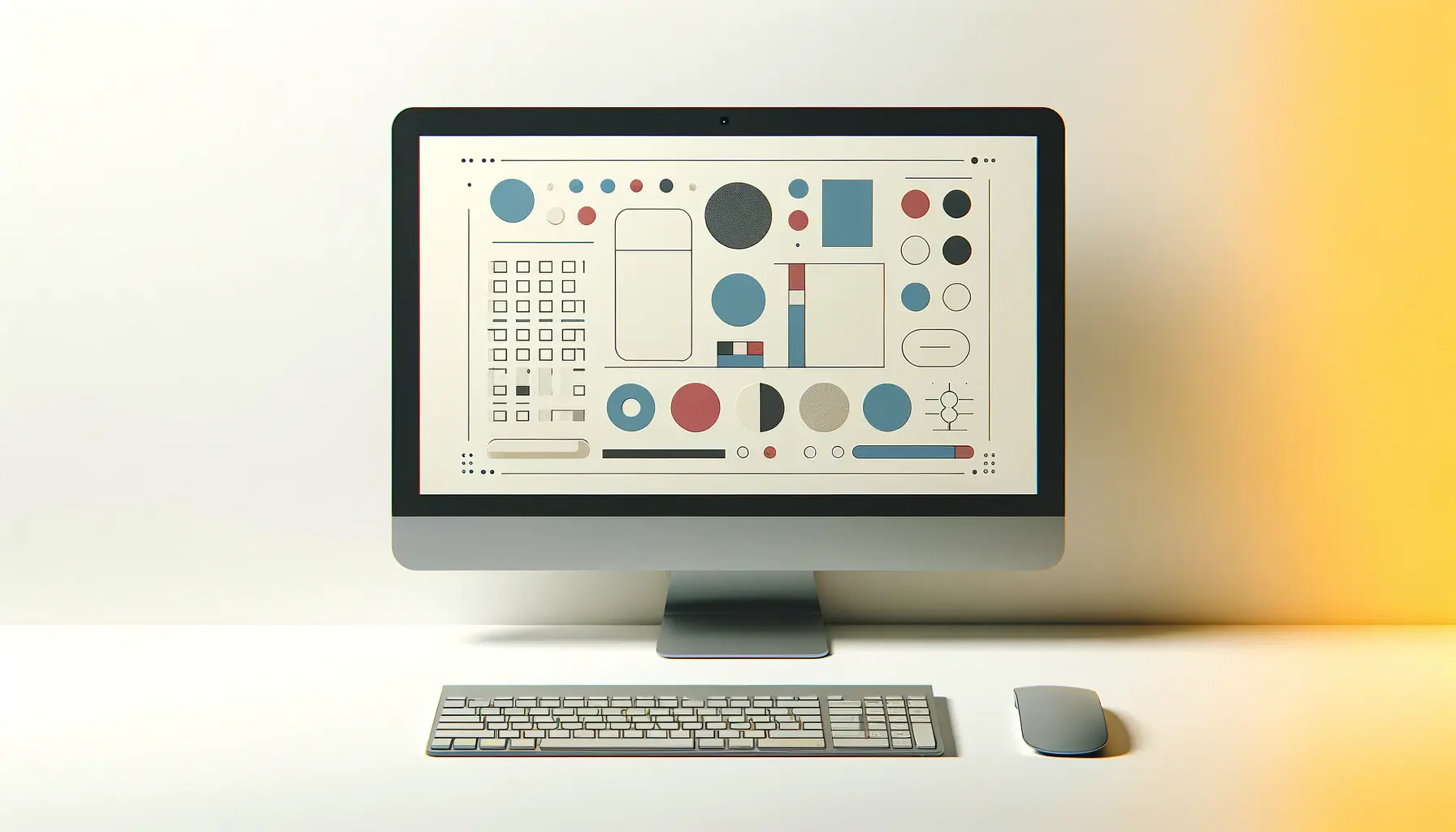Exploring the realm of OpenAI’s Sora, we delve into the intricacies of its user experience, a pivotal aspect that stands at the core of its design philosophy.
Sora, as a beacon of innovation in artificial intelligence, offers a unique interface that promises to redefine how users interact with AI technologies.
The emphasis on user experience (UX) is not just about aesthetic appeal or the superficial layer of interaction; it’s about creating a seamless, intuitive, and engaging journey for every user.
This exploration is aimed at uncovering the nuances of Sora’s interface, understanding its user-centric design, and evaluating its effectiveness in fostering an enriching interaction between human and machine.
The concept of user experience goes beyond mere usability.
It encompasses every aspect of the user’s interaction with the product, including how they feel, the ease with which they can accomplish their goals, and the value they derive from the experience.
In the context of Sora, the UX is a testament to OpenAI’s commitment to making advanced technology accessible and enjoyable for a broad audience.
By focusing on the user experience, Sora aims to not just meet but exceed user expectations, setting new standards for what is possible in the AI domain.
- Understanding Sora’s User Interface
- Navigational Strategies within Sora
- Enhancing User Engagement through Personalization
- Accessibility and Inclusivity in Sora’s Design
- Interactive Elements and Real-time Feedback
- Learning and Development Opportunities
- Future Directions for Sora’s UX
- Embracing the Future of User Experience with Sora
- Sora’s User Experience: Essential FAQs
Understanding Sora’s User Interface
Design Principles Behind Sora
The design of Sora’s user interface is grounded in fundamental UX principles that prioritize simplicity, efficiency, and accessibility.
The interface is crafted to minimize cognitive load, making it easy for users to navigate and find the information or features they need without feeling overwhelmed.
This approach is crucial in ensuring that Sora is approachable for users with varying levels of tech-savviness.
By adhering to these principles, Sora’s design team has created an environment that encourages exploration and learning, making the user’s journey through the interface not just a means to an end but an enjoyable experience in itself.
Another cornerstone of Sora’s design philosophy is the emphasis on personalization.
Recognizing that no two users are the same, the interface offers customizable options that allow users to tailor their experience according to their preferences and needs.
This level of personalization enhances the user’s engagement with Sora, making the interaction feel more intimate and responsive to their unique context.
Key Features of the Interface
Sora’s interface boasts a range of features designed to enhance user experience.
From intuitive navigation menus to voice command capabilities, each element is integrated with the user’s convenience in mind.
The interface supports a variety of user interactions, whether it’s through typing, speaking, or even gesture controls in some applications.
This multimodal approach ensures that users can interact with Sora in the way that feels most natural to them, breaking down barriers to AI utilization.
At the heart of Sora’s interface is its intelligent search functionality.
Leveraging OpenAI’s cutting-edge technology, Sora can understand and process complex queries, providing users with accurate and relevant information swiftly.
This capability not only demonstrates the power of Sora’s AI but also significantly enhances the user experience by making information retrieval a seamless and efficient process.
The user experience of Sora is a harmonious blend of advanced technology and user-centric design, aimed at making AI interaction intuitive, personalized, and enjoyable.
Navigational Strategies within Sora
The navigational framework of Sora’s interface is a critical component that significantly impacts the overall user experience.
A well-structured navigation system ensures that users can effortlessly find their way around the interface, accessing features, tools, and information without confusion or frustration.
This part of the article delves into the strategies employed in Sora to guide users through its digital landscape, highlighting how these approaches contribute to a fluid and user-friendly experience.
One of the core strategies is the implementation of a hierarchical navigation system.
This system organizes features and functionalities in a logical order, from the most general to the most specific.
It allows users to intuitively understand how to progress through the interface to find the information or tools they need.
Below are key elements that illustrate this strategy:
- Main Menu: The main menu serves as the gateway to all of Sora’s features, presented in a clear and concise manner. It’s designed to be immediately accessible, often through a persistent navigation bar or a collapsible menu that can be accessed at any point.
- Search Functionality: Central to the navigational experience is Sora’s intelligent search bar, which allows users to bypass hierarchical navigation if they prefer. Users can input queries in natural language, and Sora’s AI efficiently directs them to the relevant section or answers.
- Contextual Help and Suggestions: Sora enhances navigation by providing contextual help and suggestions. This feature guides users through the interface by offering tips and recommendations based on their current activity or search queries.
Another pivotal strategy is the use of visual cues and feedback.
These elements are instrumental in guiding users through their interactions with the interface.
Visual cues such as icons, color coding, and animations draw attention to important features and indicate the status of user actions, providing immediate and intuitive feedback.
This visual communication ensures that users always know where they are within the interface and understand the results of their interactions.
Incorporating a mix of hierarchical organization, intelligent search capabilities, and visual guidance, Sora’s navigational strategies are designed to create a seamless and engaging user experience, making every interaction with the interface a step towards mastering the AI’s vast capabilities.
Enhancing User Engagement through Personalization
At the heart of Sora’s user experience strategy lies a deep commitment to personalization.
Recognizing the diverse needs and preferences of its users, Sora incorporates advanced personalization techniques to tailor the user experience.
This approach not only enhances user engagement but also fosters a sense of connection between the user and the technology.
Let’s explore the key aspects of personalization within Sora and how they contribute to a more engaging user experience.
Customizable User Profiles
One of the foundational elements of personalization in Sora is the ability for users to create and customize their profiles.
This feature allows users to set preferences for how they interact with Sora, including language settings, interface themes, and notification preferences.
By enabling users to tailor their interaction with the platform, Sora ensures that the user experience is as relevant and comfortable as possible for each individual.
Moreover, these customizable profiles adapt over time.
As users interact with Sora, the AI learns from their behaviors, preferences, and feedback, further refining the personalization of the experience.
This dynamic adaptation ensures that Sora remains aligned with the user’s evolving needs and preferences, making each interaction more intuitive and efficient.
Adaptive Content and Recommendations
Another key aspect of personalization within Sora is the delivery of adaptive content and personalized recommendations.
Based on the user’s past interactions, search queries, and content preferences, Sora dynamically curates content that is most likely to be of interest to the user.
This could include articles, tutorials, tools, or other resources available within the platform.
The recommendation system extends beyond static content to suggest specific features or tools within Sora that the user might find useful.
For instance, if a user frequently engages with a particular type of functionality, Sora might highlight similar or related features that could enhance the user’s productivity or enjoyment.
This level of personalization ensures that users are continually discovering new and relevant aspects of Sora, keeping the experience fresh and engaging.
Personalization in Sora is not just about enhancing the user interface; it’s about creating a deeply individualized experience that grows and adapts with the user. Through customizable profiles and adaptive recommendations, Sora makes every user feel seen, understood, and valued.
Accessibility and Inclusivity in Sora’s Design
Accessibility and inclusivity are paramount in the design of Sora, ensuring that the platform is usable and enjoyable for a wide range of users, including those with disabilities.
OpenAI has taken significant steps to incorporate accessibility features into Sora, making it a model for inclusive design in the realm of AI technologies.
This commitment to accessibility not only broadens the user base but also reflects a deeper understanding of the diverse needs of users worldwide.
Key Accessibility Features
Sora’s interface includes several key features designed to make the platform accessible to users with various disabilities.
These features are integral to providing an equitable user experience, ensuring that everyone can navigate, understand, and benefit from Sora.
Some of the most notable accessibility features include:
- Screen Reader Compatibility: Ensuring that all textual and interactive elements are fully accessible via screen readers, allowing visually impaired users to interact with the platform effectively.
- Keyboard Navigation: Enabling users to navigate the interface using keyboard shortcuts, which is crucial for individuals who cannot use a mouse due to physical disabilities.
- Contrast and Color Options: Offering adjustable contrast and color settings to accommodate users with color vision deficiencies or other visual impairments.
- Text Size and Font Adjustments: Allowing users to customize text size and font settings to improve readability according to their personal needs.
Designing for Cognitive Accessibility
Beyond physical accessibility, Sora also addresses cognitive accessibility by designing an interface that is easy to understand and use, regardless of the user’s cognitive abilities.
This includes:
- Simplified Language: Using clear, concise language throughout the interface to ensure that information is easily comprehensible.
- Intuitive Layout and Navigation: Organizing content and features in a logical, predictable manner to reduce cognitive load and make the platform more navigable.
- Consistent Interface Elements: Maintaining consistency in the design and function of interface elements across the platform to avoid confusion and enhance user confidence.
- Feedback and Error Messages: Providing clear, constructive feedback and error messages that help users understand and recover from mistakes.
Incorporating comprehensive accessibility and inclusivity features, Sora exemplifies how technology can be designed to cater to the needs of all users, ensuring that the benefits of AI are accessible to a diverse audience.
Interactive Elements and Real-time Feedback
The integration of interactive elements and real-time feedback is a cornerstone of Sora’s user experience, enhancing the platform’s usability and engagement.
These features are designed to make the interaction between users and Sora not only more dynamic but also more informative, providing immediate responses to user actions.
This part of the article explores how Sora utilizes interactive elements and real-time feedback to create a more immersive and responsive user experience.
Dynamic Interactive Elements
Interactive elements within Sora, such as buttons, sliders, and toggles, are designed to be both visually appealing and functionally intuitive.
These elements invite user interaction, making the experience of navigating Sora’s interface engaging and enjoyable.
Key aspects of these dynamic interactive elements include:
- Visual Feedback: Interactive elements often change appearance when hovered over, clicked, or tapped, providing visual feedback that confirms the user’s action.
- Animation and Transitions: Subtle animations and transitions are used to guide the user’s attention and enhance the fluidity of interactions, making the interface feel alive and responsive.
- Contextual Menus and Overlays: Contextual menus and overlays appear in response to user actions, offering additional options or information without overwhelming the main interface.
Real-time Feedback Mechanisms
Real-time feedback is crucial in informing users about the outcome of their interactions, contributing to a seamless and efficient user experience.
Sora incorporates various feedback mechanisms to ensure users are always aware of the system’s status and their actions’ results.
These mechanisms include:
- Instantaneous Response: Actions taken by users elicit immediate responses from the system, whether it’s executing a command, displaying search results, or updating settings.
- Progress Indicators: For processes that take longer, progress indicators inform users about the status of their request, managing expectations and reducing uncertainty.
- Error Handling: When errors occur, Sora provides clear, helpful feedback, guiding users on how to resolve the issue and continue their interaction without significant disruption.
- User Input Validation: As users input data, Sora validates this information in real-time, offering suggestions or corrections to ensure accuracy and efficiency.
The thoughtful integration of interactive elements and real-time feedback within Sora’s interface underscores OpenAI’s commitment to creating a user experience that is not only functional but also deeply engaging and informative.
Learning and Development Opportunities
Sora’s platform is not just a tool for immediate tasks but also a resource for learning and personal development.
Recognizing the potential for growth in every interaction, Sora offers a variety of opportunities for users to expand their knowledge and skills.
This commitment to fostering learning and development is a testament to the platform’s value as a comprehensive AI solution.
Let’s explore how Sora facilitates these opportunities and the impact they have on the user experience.
Integrated Educational Resources
Central to Sora’s learning and development offerings are its integrated educational resources.
These resources range from tutorials and guides to interactive modules, all designed to enhance the user’s understanding and proficiency with the platform.
Key features include:
- Step-by-Step Tutorials: For users new to Sora or certain features, step-by-step tutorials guide them through processes, ensuring they can learn at their own pace.
- Interactive Learning Modules: These modules offer hands-on experience with Sora’s features, allowing users to apply what they’ve learned in a controlled environment.
- FAQs and Community Forums: A wealth of knowledge is available through FAQs and community forums, where users can find answers to common questions and share insights with peers.
Personalized Learning Paths
Beyond the static resources, Sora personalizes learning opportunities based on the user’s interactions and feedback.
This personalization ensures that learning paths are relevant and aligned with the user’s interests and needs.
Elements of personalized learning paths include:
- Recommended Tutorials: Based on the user’s activity, Sora recommends specific tutorials that can help improve their understanding or skills.
- Adaptive Challenges: Users are presented with challenges that adapt to their skill level, encouraging them to apply what they’ve learned and explore new functionalities.
- Progress Tracking: Sora offers tools for users to track their learning progress, setting goals and celebrating milestones along the way.
Through its comprehensive educational resources and personalized learning paths, Sora not only enhances the user experience but also empowers users to take full advantage of the platform’s capabilities, fostering a culture of continuous learning and improvement.
Future Directions for Sora’s UX
The landscape of user experience (UX) within Sora is ever-evolving, driven by continuous innovation and user feedback.
As we look to the future, several key areas are poised to shape the next generation of Sora’s interface and interaction design.
These future directions not only aim to enhance the current user experience but also anticipate the needs and challenges of tomorrow’s users.
Let’s delve into the anticipated developments in Sora’s UX and how they promise to further revolutionize the user-AI relationship.
Advancements in AI and Machine Learning
At the forefront of Sora’s future UX enhancements are advancements in AI and machine learning technologies.
These advancements are expected to enable even more personalized and intuitive interactions between users and Sora.
Key areas of focus include:
- Improved Personalization: Leveraging deeper learning about users’ preferences, behaviors, and feedback to tailor the UX more precisely to individual needs.
- Enhanced Understanding: Advancing natural language processing capabilities to better understand and anticipate user queries, making interactions more fluid and natural.
- Proactive Assistance: Developing the ability for Sora to offer proactive assistance, anticipating users’ needs before they even articulate them, based on context and past interactions.
Integration with Emerging Technologies
Another exciting direction for Sora’s UX is the integration with emerging technologies, which promises to expand the ways users can interact with the platform.
These integrations may include:
- Augmented and Virtual Reality: Offering immersive experiences that could revolutionize educational, creative, and collaborative tasks within Sora.
- Wearable Devices: Extending Sora’s functionality to wearable devices, allowing for more seamless and convenient access to its features.
- Internet of Things (IoT): Connecting Sora with IoT devices to enable smarter home and workplace environments, controlled and optimized through Sora’s interface.
The future of Sora’s UX is not just about technological advancements but also about deepening the connection between users and AI.
By focusing on personalization, understanding, and the integration of cutting-edge technologies, Sora is set to offer an even more compelling and enriching user experience.
As these developments unfold, the potential for Sora to transform our interaction with technology and with each other is boundless, promising a future where AI enhances every aspect of our lives in intuitive and meaningful ways.
Embracing the Future of User Experience with Sora
The journey through Sora’s user experience (UX) is a testament to OpenAI’s commitment to creating interfaces that are not only functional but also intuitive, engaging, and accessible to a broad spectrum of users.
As we have explored the various facets of Sora’s UX, from its navigational strategies to its personalized learning opportunities, it’s clear that the platform is designed with the user at its core.
The future directions of Sora’s UX, fueled by advancements in AI and the integration of emerging technologies, promise to further enhance this relationship between users and artificial intelligence.
Key Takeaways for a Superior UX
In reflecting on the insights gathered from Sora’s current UX and its potential evolution, several key takeaways emerge that underscore the principles of superior user experience design:
- Personalization is paramount: Tailoring the UX to meet individual user needs and preferences is crucial for engagement and satisfaction.
- Accessibility and inclusivity matter: Designing with all users in mind ensures that technology is a tool for empowerment, not exclusion.
- Feedback loops enrich interaction: Real-time feedback and interactive elements make the UX more dynamic and responsive, fostering a deeper connection between the user and the platform.
- Continuous learning is a shared journey: Providing users with opportunities to grow and develop within the platform not only enhances their experience but also builds a community of knowledgeable and skilled users.
- Anticipation of future needs: Staying ahead of technological trends and user expectations will ensure that Sora remains at the forefront of UX innovation.
As we look to the future, it’s evident that the user experience of Sora is poised for even greater heights.
The integration of cutting-edge technologies like augmented reality, wearable devices, and the Internet of Things (IoT) promises to open new avenues for interaction, making the user experience even more immersive and personalized.
The potential for Sora to not only respond to but also anticipate user needs through proactive assistance and enhanced understanding marks a new era of user-AI synergy.
In conclusion, the exploration of Sora’s user experience offers valuable insights into the principles of effective UX design and the potential of AI to enrich our interactions with technology.
By focusing on personalization, accessibility, engagement, and continuous learning, Sora sets a benchmark for what is possible in creating user-centric platforms.
As we move forward, the ongoing evolution of Sora’s UX stands as a beacon for the future of user experience, promising a world where technology not only meets our needs but also anticipates and evolves with them.
Sora’s User Experience: Essential FAQs
Delving into the intricacies of Sora’s user experience, we’ve compiled a list of frequently asked questions to enhance your understanding and navigation of the platform.
Install the Sora app from your device’s app store or visit soraapp.com, then follow the on-screen instructions to set up your account.
Yes, Sora allows you to adjust text size, font type, and lighting to create a personalized reading environment.
Absolutely, Sora supports note-taking and highlighting features, enabling you to mark important sections and add personal annotations.
Books can be renewed or returned directly within the Sora app, under the ‘Loans’ section, ensuring a seamless user experience.
Yes, Sora provides the option to download books, allowing you to enjoy reading even when you’re not connected to the internet.
Sora is designed with accessibility in mind, offering features like screen reader support, adjustable text settings, and more.
Sora offers a progress tracking feature, enabling you to see how much of a book you’ve read and your overall reading history.
For support, visit the Sora Help section within the app or on the Sora website, where you’ll find a comprehensive FAQ and contact options.













